This Leonardo Da Vinci art history lesson captures the essence of the legendary Renaissance innovator in simple terms.
If you’ve been looking for an enriching complimentary lesson to your art history or Renaissance class, you probably discovered that many project ideas on Da Vinci are either too advanced for lower elementary, or just not all that inspiring.
This art history lesson is accessible for littles, and includes a project that is both flexible and beautiful—-in that little-kids-art-is-always-beautiful kind of way.
Da Vinci Art History Lesson
Leonardo Da Vinci was arguably the most notable artist of the Renaissance.
But he wasn’t just an artist! He was also a mathematician, engineer, scientist, and architect.
When we think of the “classic Renassaince man,” Da Vinci practically wrote the book on how to achieve a well-rounded education and make use of it in the most innovative and inspiring ways.
Da Vinci’s prolific imagination made him famous for conceptualizing inventions long, long before his time.
Among his many ideas, he designed an early prototype of the helicopter, a parachute, and various instruments of war, including an armored tank!
The Mona Lisa
Although he produced an astonishing number of remarkable works of art and engineering, he is best known today for his most famous painting, The Mona Lisa.
With her sly smile and eyes that seem to follow you around the room (Try it! Walk side to side in front of her and watch her watch you!), the Mona Lisa evokes a sense of mystery and magic.
But the real Mona Lisa’s name was Lisa Gherardini.
The painting is considered to be among the most famous in the world and currently resides in The Louvre museum in Paris, France.
Its rich and fascinating history is almost as interesting as the painting itself. Once, an Italian museum worker named Vincenzo Peruggia even stole the painting in a daring crime that led the authorities on a 2-year chase for it!
The Book
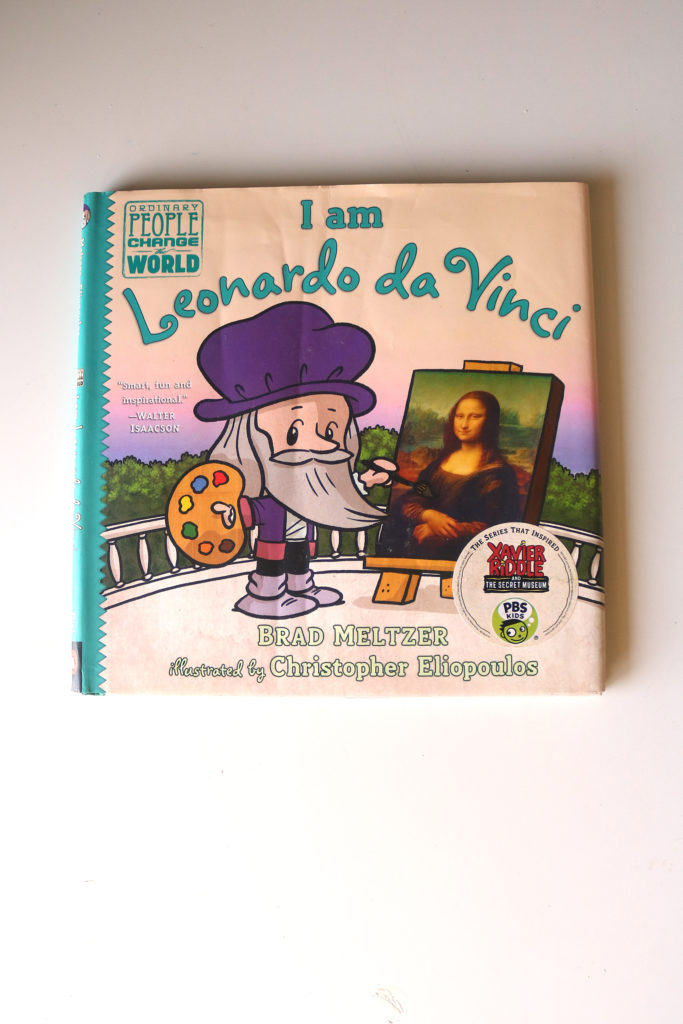
This copy of (affiliate link —->) I Am Leonardo Da Vinci by Brian Meltzer looks well-worn because it is.
I am always looking for high-quality children’s books in the sea of terrible children’s books.
Once I find one, if it’s in a series, I explore as many of them as I can with my kids.
I found that all of Brian Meltzer’s books on historical figures (like Rosa Parks, Neil Armstrong, and Marie Curie) make nice additions to the old bookshelf.
The Project
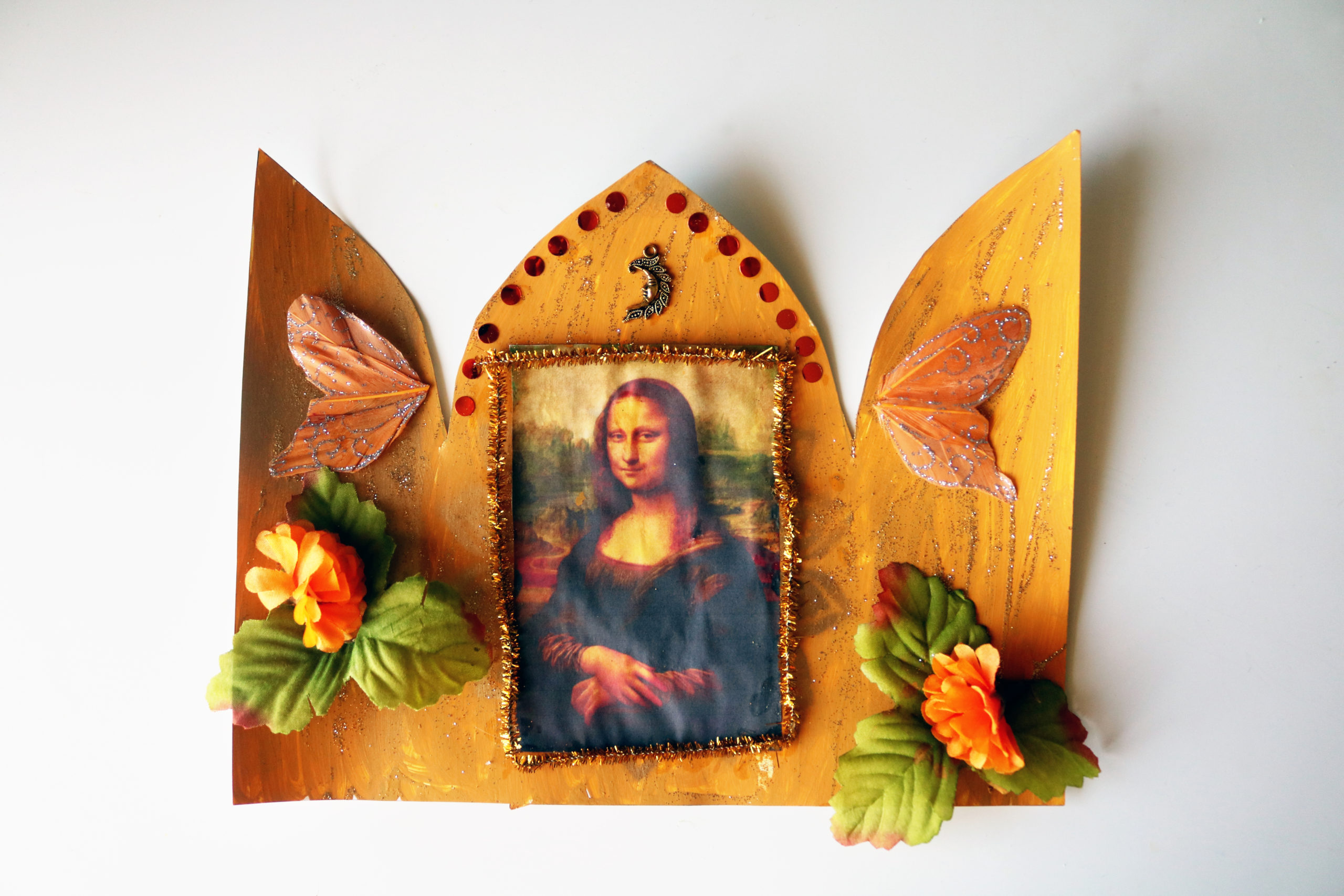
I wanted to incorporate this lesson into a larger unit on the Renaissance, and also, to give the kids some creative freedom.
So I chose this project that allows them to incorporate the Mona Lisa into a piece of their own original artwork.
Things you will need.
-piece of cardstock
-a printout of the Mona lisa
-paints & paintbrushes
-odds & ends from your craft supplies (glitter, faux flowers, silk butterflies, old costume journey, ect)
-craft glue
Directions
1. Cut out a triptych shape from cardstock. For really little kids you can do this yourself. For older kids, you can give them a template to trace/cut.
2. Have the kids paint the cardstock any color of their choice.
3. If you don’t want to turn this into a multi-day project, then you can have them use a blow dryer to dry the paint.
4. Cut out/glue the Mona Lisa into the center of the triptych.
5. Decorate the panels and surrounding cardstock with odds & ends from your craft supplies.
Hang it on the wall, stick it on your refrigerator, or give it to grandma. 🙂
Other ideas to complement this lesson.
-Incorporate a lesson about human anatomy. Da Vinci was very interested in the human body and was involved with the commonplace human dissections of the time. Most famously, he emphasized his fascination with the symmetry of the human body in his depiction of The Vitruvian Man.
-Try building a Da Vinci bridge from popsicle sticks as part of a lesson in architecture or engineering. It’s trickier than it looks!
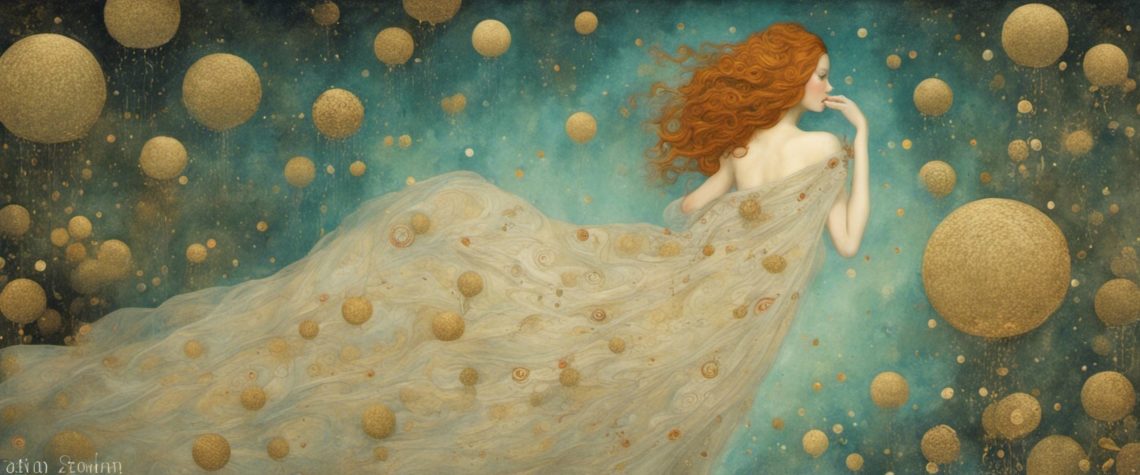
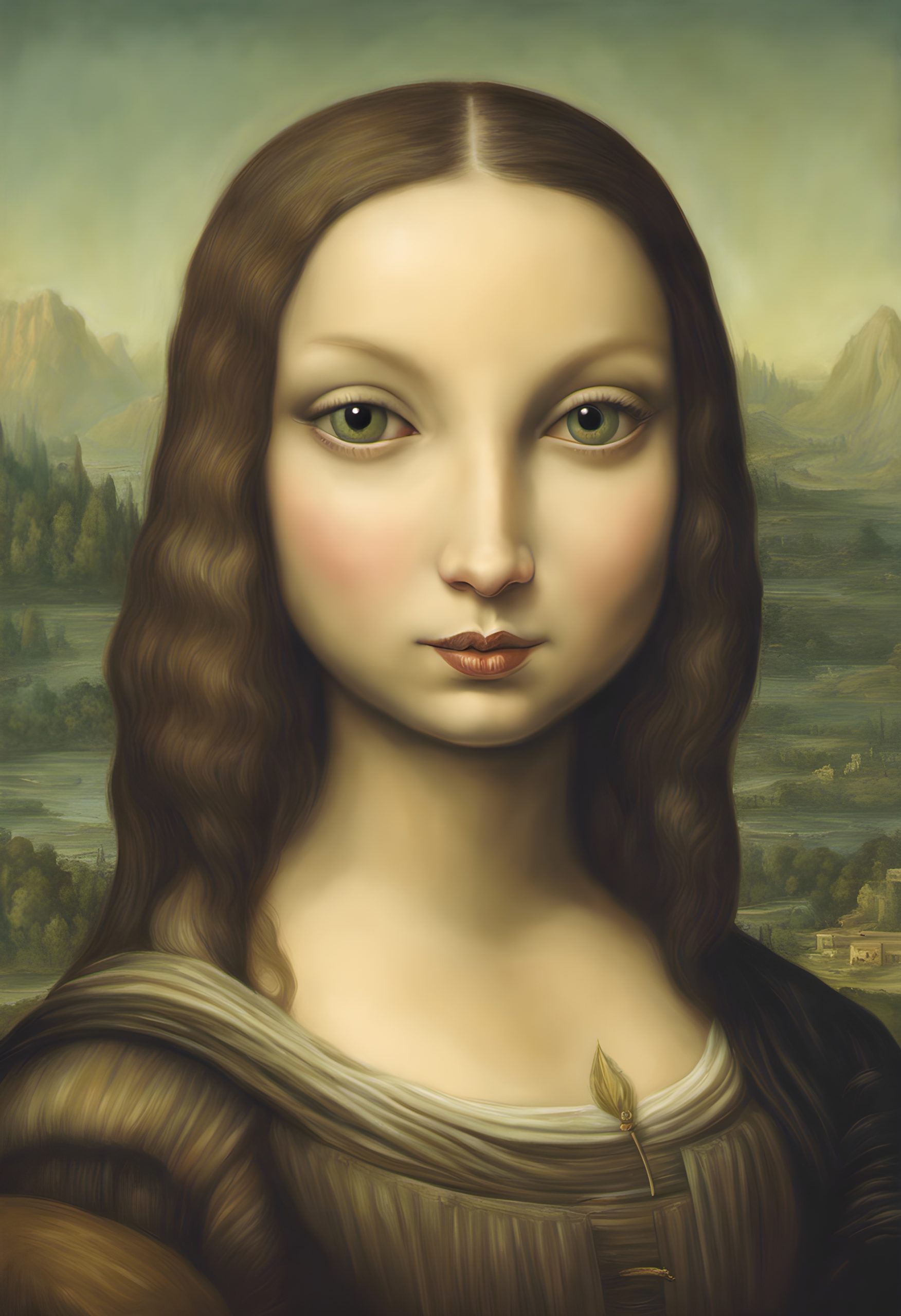
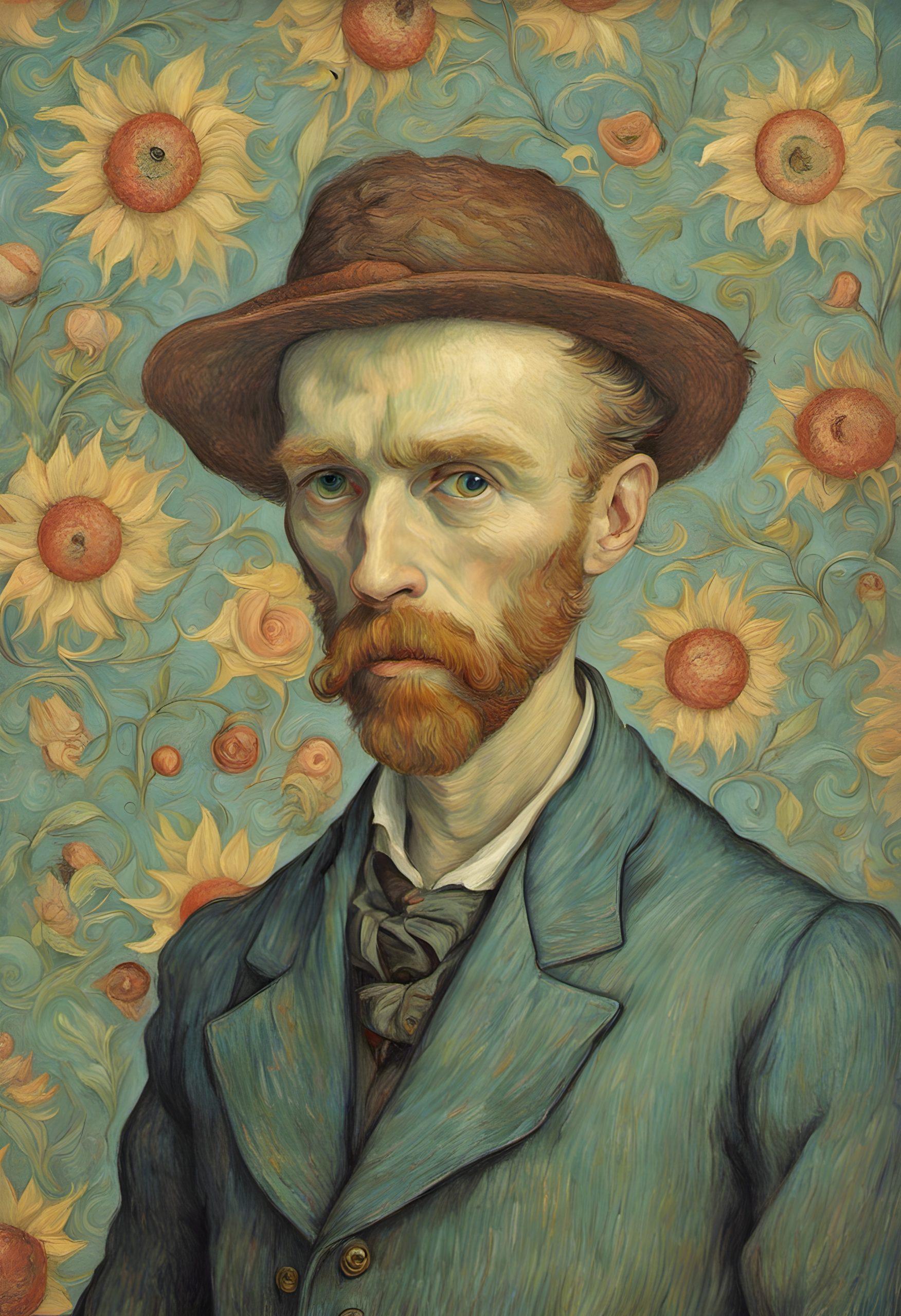
1 Comment